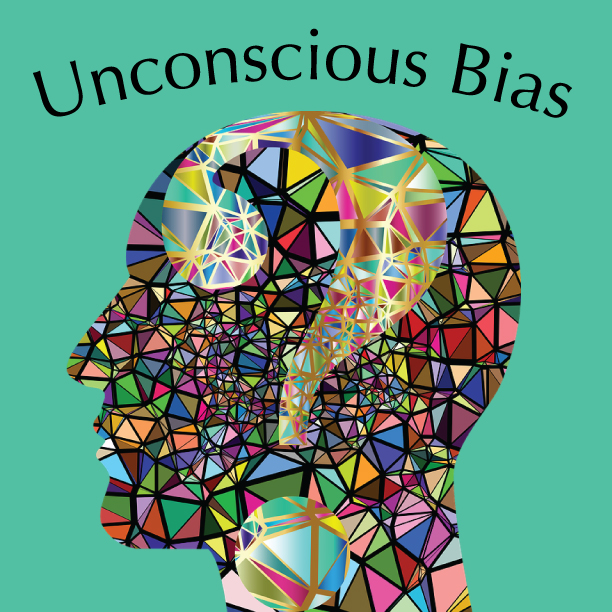Be Biased Against Your Own Unconscious Bias

I believe the word “racism” sparks a flame in the heart, mind, and soul of each individual that hears it. The more parties involved in a specific incident, the higher the flames. Often, the flame of potential racism has been banked by using the term “unconscious bias”. This palatable term and its exploitation seems to mitigate the impact on the individual(s) accused of committing the racist act and allows people to say “I’m not racist, I just have my personal unconscious biases, like everyone else!”. Often, a group is left to ponder their own thoughts, while the institutional practices which allowed the behaviors to surface in the first place never get addressed, thus, perpetuating the racist environment. My belief is that raising the issue of racist behavior is one of the most delicate and inflammatory acts in the business of group facilitation today. More so than gender bias or sexual orientation; both of which are still quite present in our society and work environments. (Yes. I am guilty of missing both of these in my own work.)
As a mediator/trainer/facilitator who self-identifies as black, African-American, I am often called in when client conflict issues are identified as pertaining to race or racial equity. I must admit I enjoy doing so. As a child of the late-forties, I grew up in a segregated society outside Detroit, Michigan. It was a “loving bubble” where I was nurtured by black men, women, and teachers. I was taught ways to navigate through a society that was structured around conscious and unconscious biases related to my race, all while maintaining my dignity and racial pride on top of learning the traditional “toxic masculinity” (which is a WHOLE other blog topic, so don’t get me started).
Fast forward to 1965. I graduated from high school a year after the Civil Rights Act was signed, outlawing discrimination based on race, color, religion, sex, or national origin. It prohibited unequal application of voter registration requirements, and prohibited racial segregation in schools, employment, and public accommodations. In support of the non-discrimination policies that were brought into law, Affirmative Action policies, practices, and laws were also put into place to correct the impact of the previous discriminatory practices.
I began seeing and benefitting from some of the changes the Act brought into our legal and legislative environment. Doors opened and opportunities that had been denied black people earlier were now opening up. Many major colleges and universities increased their black student enrollment with generous scholarships and grants to compensate for the financial disparities that were prevalent and undeniable at the time. In the interest of transparency, I was a recipient of one of those scholarships. I had my tuition, room and board paid for and even received a monthly stipend to support my travel and other out-of-pocket expenses. I gave it all up when I enlisted into the U.S. Navy in 1966. (Don’t ask!)
Over the years my professional work has evolved from direct patient care to employee relations and community job development, to what is now referred to as Diversity, Equity, and Inclusion. I have noticed that the number of acts of racial discrimination have greatly diminished, even if they have not completely disappeared. I am also pleased to see more people; black, white, Asian, Latinx or otherwise self-identified, speaking out against discrimination and actively addressing issues of racism in many ways.
Okay, here’s where it begins to get sticky. So, let’s first back up and look at how racism and discrimination show up in our society today. We can identify four levels of racism; internalized, interpersonal, institutional, and structural levels. Internalized racism is a product of our personal experience and the social and cultural norms in which we were raised. They can be feelings of superiority or inferiority and do govern how we then interact with others. This leads to the interpersonal level, when our perspectives clash or mesh with others, causing interpersonal conflict or reinforcing notions of inequality and racism. At the institutional level we are looking at specific policies and practices of an organization or cultural environment that result in the exclusion of an identifiable group of people based on their race, sex or ethnicity. Finally, at the structural level, we have practices like The G.I. Bill which created opportunity for ex-military white men to go to college, buy homes at (what were for that time) deeply discounted rates, and begin to build equity and increasing family wealth while denying access to the same loans to black G.I.s and women -- blatant racism and sexual discrimination.
So, onward to mediation. As I stated earlier, I often get called in when the issue of race or racism is on the table and I then must work slowly and deliberately with the principal parties to uncover the act of racism and work towards the remedy. During our journey what may also happen is that, when the act of possible racism is finally on the table, what may be more institutional or structural racism, gets translated as interpersonal racism. Things get said…or merely thought…. like “What? You’re calling me a racist?” And the stage is set for a “Battle Royale”. In order to come up with a lasting solution my approach is to first, identify what’s going on. That is, first, identify the perceived racist act, identify at which level it is occurring then working with the parties to collaboratively create an approach that will correct the behavior and eradicate the racist policies from the system. This can bring healing to the aggrieved party and prevent future acts for those coming after.
We, as mediators, are obliged to “call it as we see it” but first, we must see “it”! We must learn to recognize our own privileges and discriminatory practices. We must learn when we can contribute to the solution and stop perpetuating the problem by failing to accurately name the issues creating the conflict. Otherwise, we’re helping to perpetuate the problems of a society built to give privilege to a precious few. When we can see, hear, and feel how race impacts our society and ourselves we can make a difference.
Photo credit: https://www.c2st.org/event/unconscious-bias/
